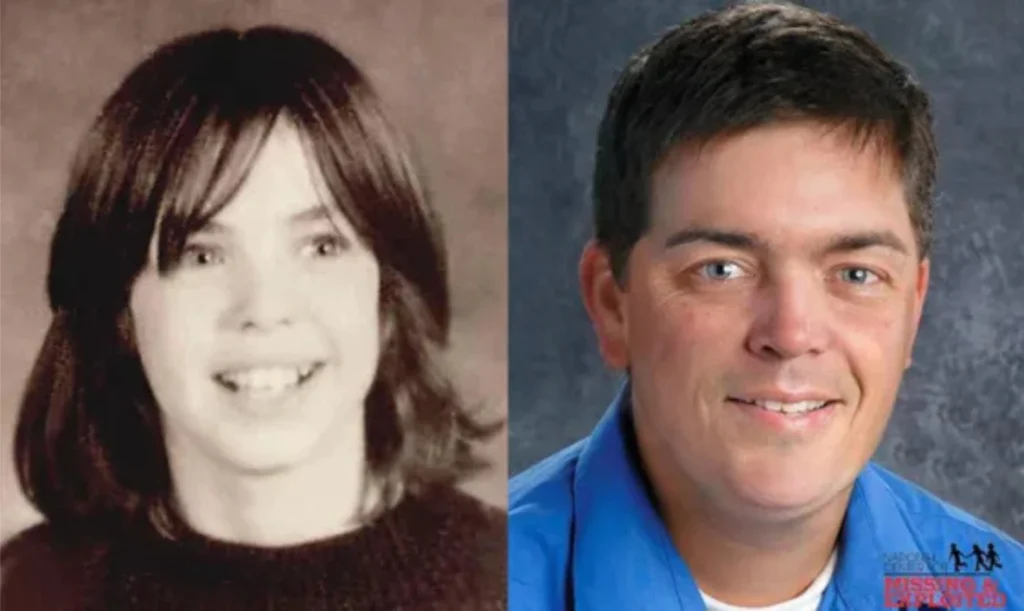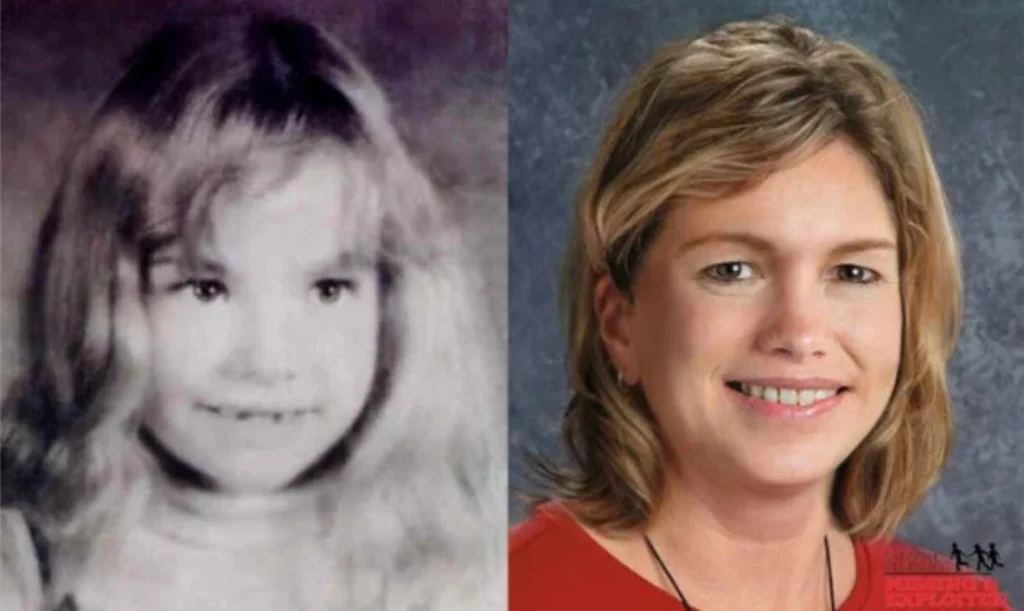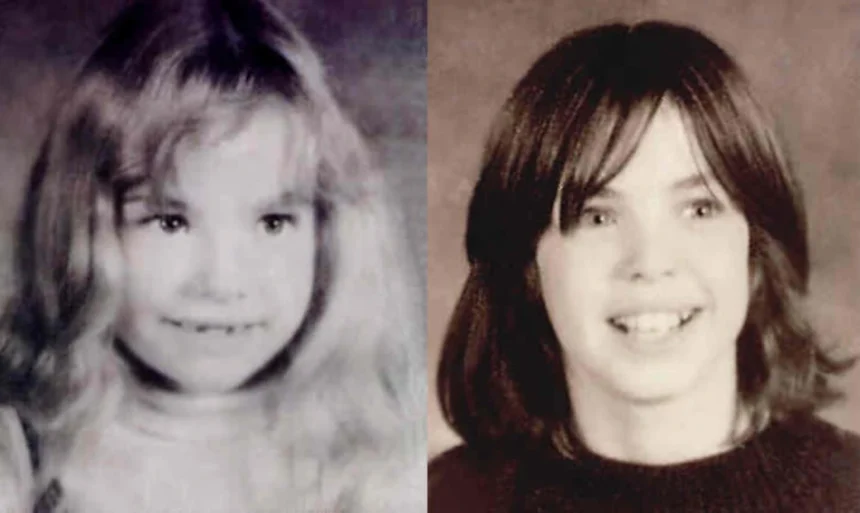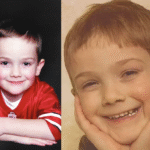On the night of September 4, 1978, the cold winds whispered through the thick woods of Sterling, Alaska, as two children—Scott Fandel, 13, and his sister Amy, 8—walked home to their cabin for what should have been just another ordinary night. But by the time the sun rose the next morning, both children had vanished without a trace, leaving behind a silent cabin, a pot of boiling pasta, and a mystery that still grips Alaska more than four decades later.
No bodies, no confessions and no solid leads. Just endless questions.
A Tight-Knit Sibling Bond in the Heart of Alaska
Scott and Amy lived with their mother, Margaret Fandel, in a modest cabin off Scout Lake Road—a narrow, tree-lined path just a stone’s throw from the Sterling Highway. The children’s father, Roger Fandel, had relocated to Arizona earlier that year after separating from Margaret. Though the family was adjusting to the new normal, friends and neighbors described the children as happy and tightly bonded.
“Scott was just a normal kid—liked to cook late at night, joke around. Amy was full of life, always smiling,” said a former neighbor during a 2005 interview.
Sterling was a small community where neighbors knew each other by name, and kids ran barefoot through the summer grass. Nothing truly terrible ever happened—until it did.
The Last Known Hours

That Monday evening, Margaret, her sister Cathy Schonfelder, and the children went to Good Time Charlie’s, a local bar-restaurant that allowed minors in the dining area. Around 10 p.m., the women dropped Scott and Amy off at home and returned to the bar to continue socializing.
The children didn’t stay put. They headed over to the Luptons’ house—close family friends and their nearest neighbors. There, they played and chatted until roughly 11:45 p.m., when the Luptons told them it was time to go.
That was the last time anyone reported seeing them.
At around 2 or 3 a.m. Margaret and Cathy returned home. The cabin was dark—eerily so. Margaret found it odd, especially since both children were afraid of the dark. Even stranger, a pot of pasta and tomatoes was boiling unattended on the stove.
“He always made himself something to eat before bed,” Margaret later said. “But that night, it looked like he never got the chance to finish.”
According to some reports, the women didn’t check the bedrooms, assuming the kids had stayed overnight at the Luptons’. Others suggest they did peek in and found nothing unusual. The next morning, they went to work as usual.
Realization and Panic
Everything unraveled after school started that day. Neither child showed up. Calls to the Luptons confirmed the children hadn’t been there overnight. At 5:14 p.m., Margaret called the Alaska State Troopers. What followed was one of the most intense and heartbreaking searches in Alaskan history.
Search parties combed the thick forest surrounding the cabin. Volunteers, police officers, helicopters, and search dogs canvassed the area for days. Hundreds of man-hours were poured into the effort.
Nothing.
The only physical evidence found was a handful of spent bullet casings outside the cabin. Investigators couldn’t determine if they were related to the disappearance or simply leftovers from target practice, a common activity in the area.
Sergeant Tom Sumey, who worked the case, said in an interview years later, “We had dogs, we had aircraft, we had people on foot. There was just nothing. Nothing to explain it.”
Theories Begin to Form

With no bodies and no leads, police were left grasping for answers. The children’s father, Roger Fandel, flew back from Arizona and joined the search. Though he was questioned and investigated thoroughly, authorities eventually ruled him out as a suspect.
But the whispers didn’t stop.
Margaret’s brother, Terry Schonfelder, has always remained suspicious. “I still think Roger knows more than he’s saying,” Terry said. “I’ve said it since day one.” Despite this, police never found any evidence tying Roger to the case.
One lead seemed promising for a while. Two carnival workers, who had previously stayed at the Fandel cabin with Margaret’s permission, were reportedly seen driving a black sedan near the house the night the kids vanished. When questioned, they admitted they were in the area that night but claimed they changed their minds about stopping by.
Nothing ever came of it.
Painful Silence

As the years passed, so did the hope of a quick resolution. Tips came in sporadically—someone saw a girl who looked like Amy in Montana; someone else said Scott had run away and was living under a new name. Each lead led nowhere.
One of the more bizarre claims came from a woman who claimed to be Roger’s ex-girlfriend. She allegedly offered to reveal the truth about the children’s fate for $5,000. The offer turned out to be empty, but it captured headlines and reignited public interest.
Over time, the cabin burned down, taking with it any possible remaining evidence. The case grew cold, but it never closed.
“There’s always that one case that sticks with you,” former trooper Sumey said in an interview. “For me, it’s this one. You just can’t let go of two kids disappearing into thin air.”
“You Never Think It Will Happen to You”
In Sterling, the story of the Fandel children has become legend—told around kitchen tables, passed down to younger generations. It’s a dark stain on an otherwise quiet place, showing that evil can sometimes come even to the safest of homes.
Online forums like Websleuths and Reddit still see occasional threads pop up about the case. Theories range from abduction by a stranger to involvement by someone the children knew. Some suggest the kids may have been taken out of state that very night, possibly hidden in a trunk or under a blanket in a vehicle.
Despite the speculation, there’s never been proof of anything.
The Alaska State Troopers still list Scott and Amy Fandel as missing persons. Their photos and age-progression images remain in national databases like NamUs and The Charley Project, where those who stumble across the case are often struck by the silence surrounding it.
Margaret, now living in the Lower 48, has rarely spoken publicly in recent years. In one of her few interviews, she said, “You never think something like this could happen to your family. We were just an ordinary family. Then, in a blink, everything was gone.”
Her words echo the heartbreak of so many families of the missing. When there are no answers, the mind fills in the blanks with worry, guilt, and endless what-ifs.
Still Waiting
More than 45 years have passed. No new evidence has surfaced and no arrests have been made. The Fandel case remains officially unsolved.
But for the family, for Sterling, and for those who still remember the faces of two children lost in the Alaskan night, the story isn’t over.
“I still think Amy is out there,” said Terry Schonfelder. “She’d be in her fifties now. If she’s alive and hears this—just know we never stopped looking.”
And maybe one day, the quiet truth of what happened to Scott and Amy will finally be heard. Until then, their names remain carved into the history of Alaska—not as a headline, but as a mystery still waiting for its ending.




